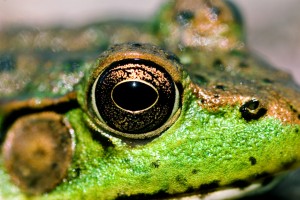TUESDAY, 2 OCTOBER 2012
it to contract rapidly and frequently to pump blood. The existence of these fibres – the Purkinje fibres – is long-established, but their evolutionary origin has been unclear until now.Birds and mammals both evolved from reptilian ancestors during the Mesozoic, but the hearts of reptiles are very different from those of birds and mammals. Reptiles have a much slower metabolic rate than ‘warm-blooded’ animals like us, so their hearts do not need to pump blood as rapidly. Until now no evidence of Purkinje fibres has been found in reptiles, raising a question: Did the birds and mammals really evolve their systems of conducting fibres independently of each other? The new study, published in PLoS ONE this month, compared the hearts of mature, ‘cold-blooded’ frogs, zebrafish and lizards with those of embryonic birds and mammals. Patterns of gene expression in the hearts of the two animal groups showed striking similarities previously hidden by the more obvious anatomical differences. They also contract according to a similar pattern as the heart beats.
The findings also look set to improve medical treatment for some cardiac diseases in humans; improving our understanding of the development of the conductive fibres, whose action is vital in the function of the heart.
DOI: 10.1371/journal.pone.0044231
Written by Amelia Penny

